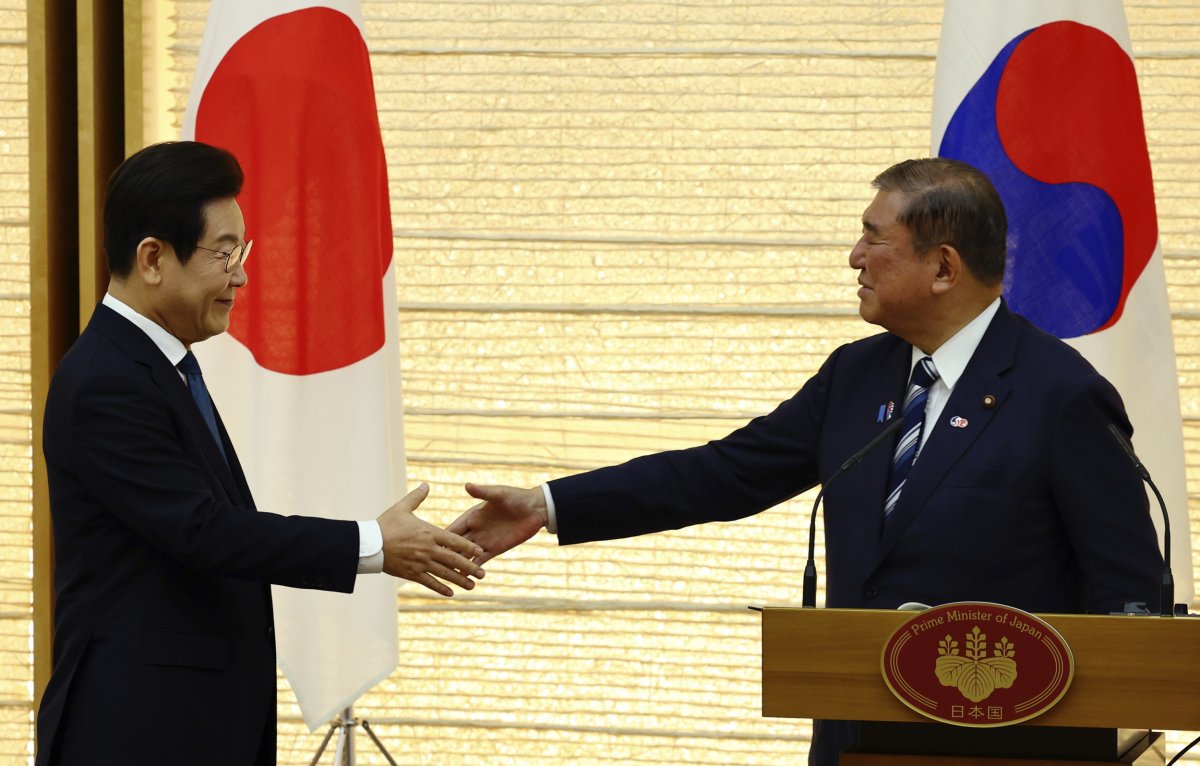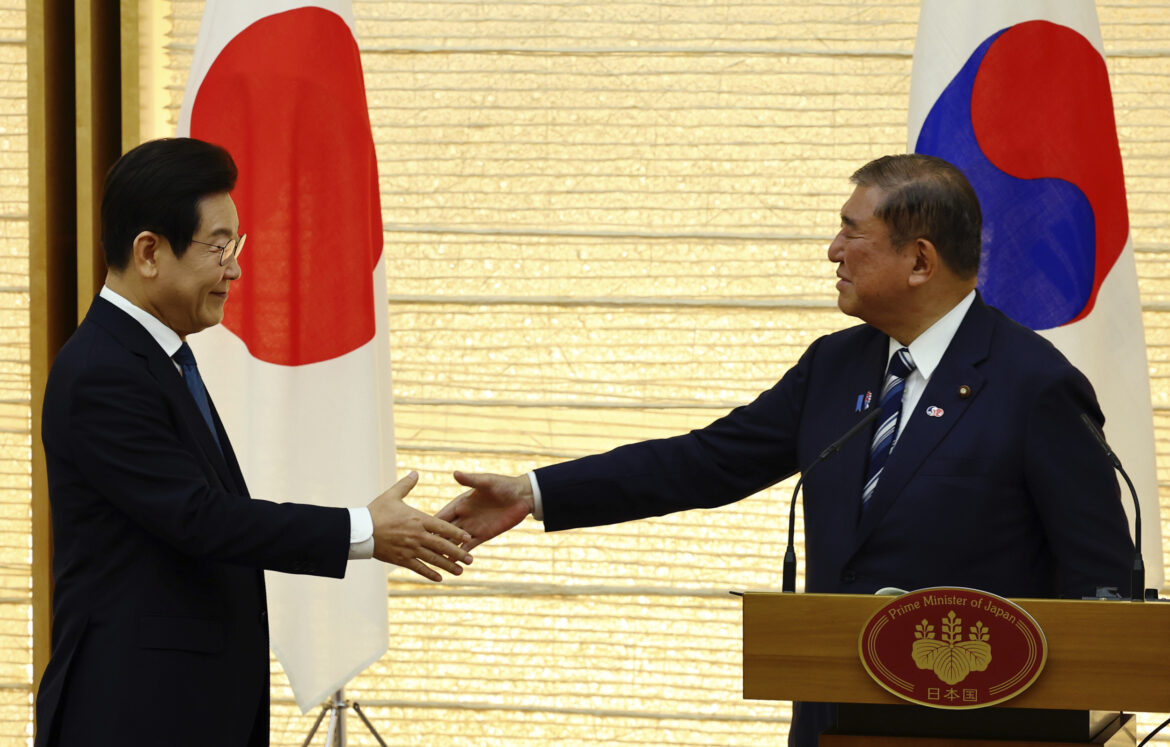Japanese Prime Minister Shigeru Ishiba and South Korean President Lee Jae Myung have agreed to launch a joint task force to tackle shared issues of concern, including birth rates.
Why It Matters
More than half of the world’s countries now have total fertility rates below the replacement level of 2.1 births per woman needed to sustain a population. Longer lifespans, rising living costs and shifting social attitudes among younger generations have contributed to the decline.
South Korea (0.75) and Japan (1.15) have among the lowest fertility rates, and both countries are considered “super-aged societies,” with more than 20 percent of their populations aged 65 and older. In recent years, both countries have invested billions of dollars to reverse the trends, fearing they will strain social safety nets and drag on economic growth.
Newsweek reached out to the Japanese Foreign Ministry and South Korean Embassy in the U.S. by email for comment.

South Korean President Lee Jae Myung, left, and Japanese Prime Minister Shigeru Ishiba shake hands at a joint press announcement after a summit in Tokyo on August 23, 2025.
South Korean President Lee Jae Myung, left, and Japanese Prime Minister Shigeru Ishiba shake hands at a joint press announcement after a summit in Tokyo on August 23, 2025.
Kim Kyung-Hoo/Associated Press
What To Know
Lee introduced the “consultive body” during a press briefing following talks with Ishiba in Tokyo on Saturday. He stressed the importance of cooperating on common challenges, including aging, birth rates, natural disaster preparedness, agriculture and rural revitalization.
“Both countries recognize the need for joint responses in these areas and will seek solutions together through the establishment of the new working-level mechanism,” the Korea Times quoted Lee as saying.
Lee and Ishiba pledged to strengthen collaboration on technologies of the future, such as AI and hydrogen energy.
They also agreed to expand a working holiday visa program by allowing Japanese and South Koreans between ages 18 and 25 to participate twice, with an eye toward strengthening people-to-people ties.
“There are many common issues between our countries […] We agreed to establish a consultative body to share wisdom and collaborate in finding solutions,” the Chosun Daily quoted Ishiba as saying during their talks.
The two leaders also reaffirmed their commitment to achieving denuclearization and stability on the Korean Peninsula.
Lee’s state visit to Tokyo was historic as it marked the first time a South Korean leader chose Japan over Washington—Seoul’s defense treaty ally—as the destination for their inaugural overseas trip.
Relations between South Korea and Japan have often been tense because of disputes over islands, trade friction and the legacy of Imperial Japan’s wartime use of so-called “comfort women” as sex slaves.
Since 2023, the two countries have stepped up trilateral security cooperation with the U.S., aimed at countering North Korea’s growing nuclear weapons and ballistic missile programs.
What People Are Saying
South Korean President Lee Jae Myung, according to the Chosun Daily: “Korea and Japan are neighbors sharing the same space and important partners in responding to common challenges amid a global complex crisis.”
Japanese Prime Minister Shigeru Ishiba: “There are many common issues between our countries, including regional revitalization, low birth rates and aging populations, population decline, agriculture, and securing resilience against disasters.”
What Happens Next
Ishiba said: “We agreed to establish a consultative body to share wisdom and collaborate in finding solutions.”


AloJapan.com